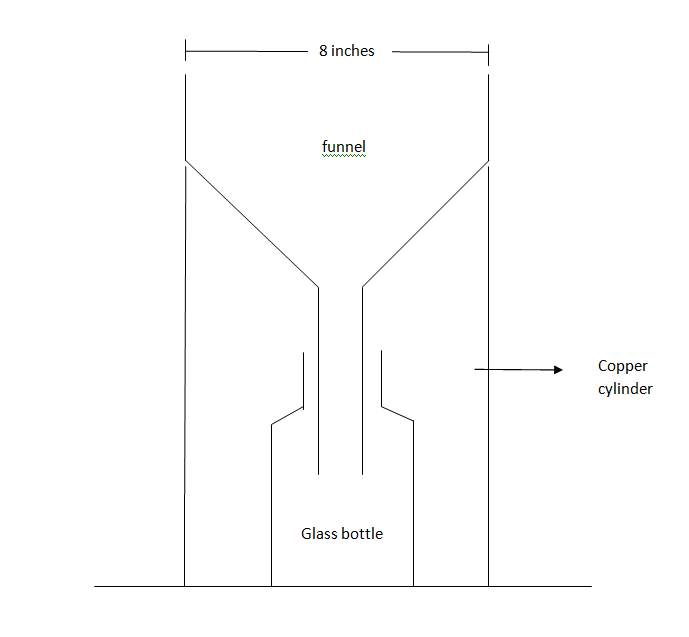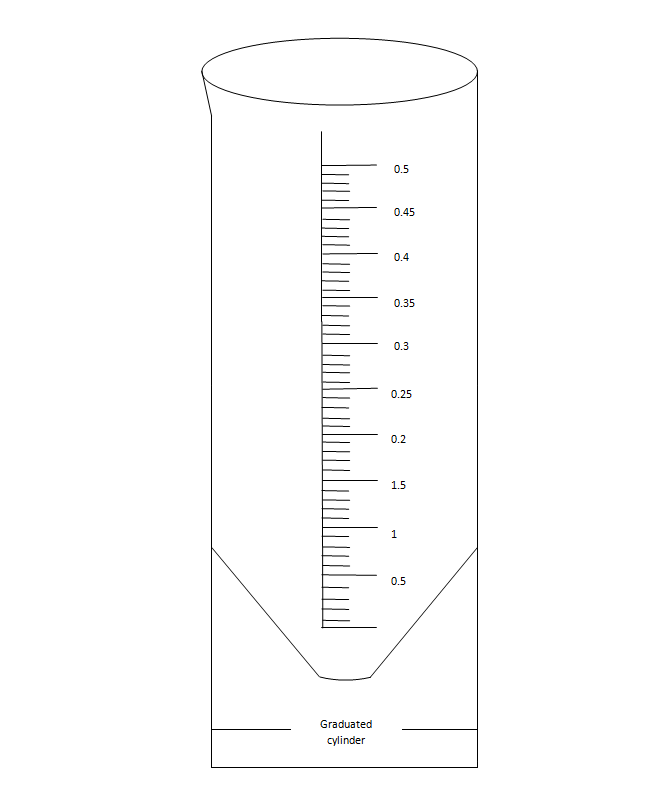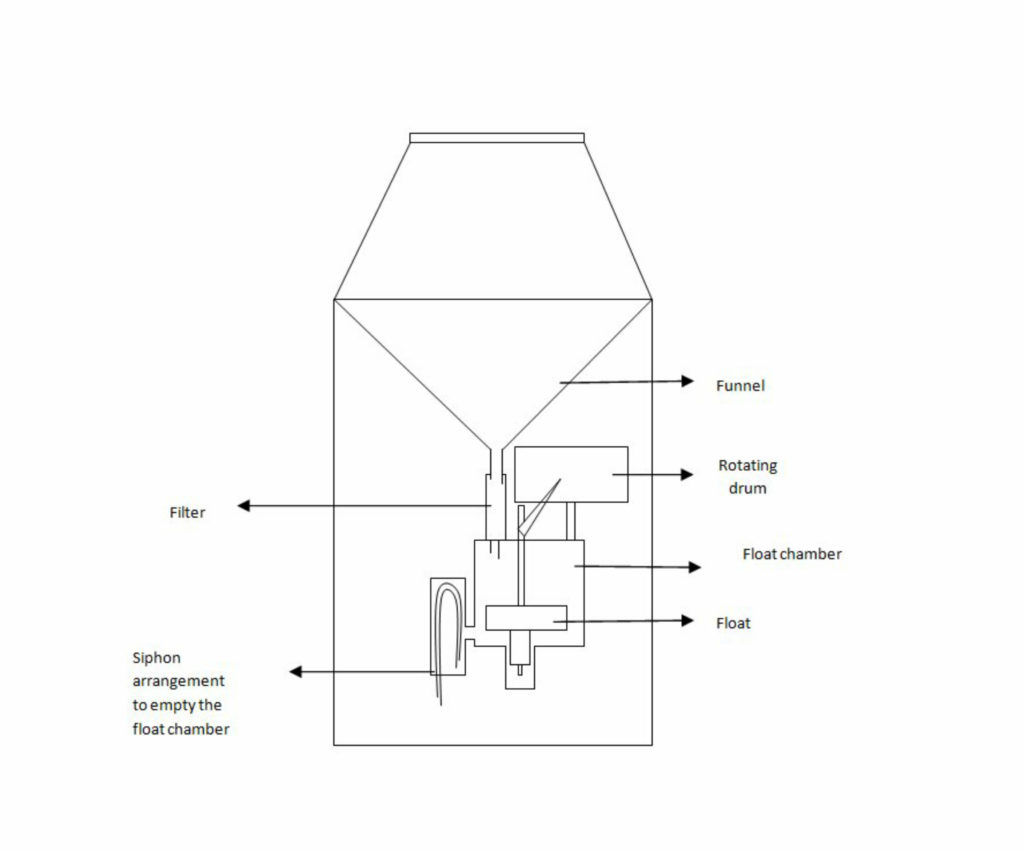Rainfall is the most common form of precipitation. It is important for recharging groundwater and water bodies and is useful in agriculture. On the downside, heavy rainfall may cause disastrous floods and landslides. Hence, it becomes important to measure and record rainfall to plan activities of the future. Now coming to the question, how is rainfall measured?
Rainfall is measured with the help of rain gauges. There are various types of rain gauges. Some need more manual work than others. The most common is the standard rain gauge.
How is rainfall measured with the standard rain gauge?
The standard rain gauge consists of a copper cylinder with a funnel of 8 inches or 5 inches diameter. The shank of the funnel leads into a glass bottle or another copper cylinder placed inside the larger cylinder (see the diagram below).
The rainfall is collected in the glass bottle and is measured by emptying it into a calibrated graduated cylinder. The graduated cylinder generally has an accuracy of 0.01 inches (some have even higher accuracies).


In some rain gauges, the water is directly collected in the graduated cylinder.
- The rainfall is measured every 24 hours, generally at 8.30 in the morning.
- The gauge must be fastened and should be placed away from any structure.
- The top of the rain gauge must be at least 0.3 metres above the ground level.
How is rainfall measured with the Tipping bucket type rain gauge?
- In a tipping bucket type rain gauge, the rainwater is collected in two buckets arranged in a see-saw mechanism one by one.
- The rainfall actually falls on a funnel which transfers the rainwater to buckets.
- When the water in a bucket reaches a given amount, it tips and the second bucket starts filling.
- Each tip of the bucket equals a certain amount of rainfall.
- The tipping of the bucket activated a pen which records the rainfall on a graph pasted on a rotating drum (driven by a clockwork mechanism).
- In some tipping bucket rain gauges, the rainfall is recorded electronically.
How is rainfall measured with the float type (Natural syphon type) rain gauge?
- The rainwater flows from the funnel into a chamber containing a float. The float rises with the increase in water level (see diagram below).
- The rainfall is recorded on the graph pasted on a rotating drum (driven by a clockwork mechanism) by a pen connected to the float.
- The chamber is emptied by a syphon arrangement.

What does 1 mm rainfall mean?
1 mm rainfall occurs when the rainwater covers the ground to a depth of 1 mm.
To learn how to measure rainfall at home, read the following article.
Quick question
Which is the coldest, windiest and driest continent?
Read more
Answer to quick question
Antarctica is the coldest, windiest and driest continent.


Easier than I thought.
Yes
Interesting 👍
Thank You.
“1 mm rainfall occurs when the rainwater covers the ground to a depth of 1 mm.”
and how much ground area are we talking about ?